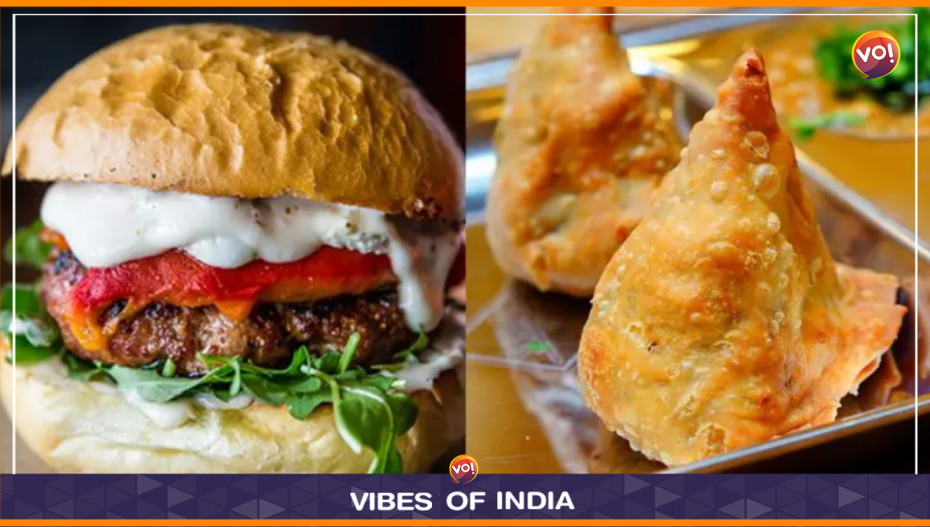Indian foodies have long debated whether samosas or burgers are the superior snacks, but a recent report by the Associated Chambers of Commerce and Industry of India (Assocham) may have finally settled the matter. The report, titled ‘Indian Cuisine at Crossroads’, compares traditional and modern Indian foods with their Western counterparts.
According to the report, a samosa is made of healthier ingredients like cumin, boiled potatoes, peas, salt, chillies and spices. In contrast, a burger contains preservatives, acidity regulators, emulsifiers, and antioxidants along with flour, sugar, vegetable oil, yeast, salt, soya flour, sesame seeds, vegetables, mayonnaise and cheese or potato patty. The report concludes that despite being calorie-dense, samosas are a better choice as they lack harmful chemicals.
Assocham extends this argument to other Desi foods versus Western foods, suggesting that a vada pav is healthier than a cheese pizza, kulfi is better than chocolate ice cream, and Bengali sweet Sandesh is healthier than an apple pie.
The report also compares the side dishes that are often paired with Western foods versus Indian thalis. While French fries and potato wedges are common sides for burgers, Indian thalis combine protein and carbohydrates like chapatis, daal, rice, sautéed vegetables, and dairy products like dahi or chaas – which are more filling. Additionally, those who eat pizzas and burgers also tend to pair them with a carbonated beverage, making the meal even more calorific. In contrast, Indian thalis offer a variety of options and portion control, reducing the risk of overeating.
The report suggests that Indian eating habits have been changing rapidly over the last two decades due to greater access to Western options, urbanisation, and increased wealth. However, the Indian food services industry is still dominated by the unorganised sector, comprising individuals or families selling ready-to-eat food through roadside vendors, dhabas, food carts, street stalls, etc. This segment caters to 65–70% of the total market, while the packaged foods market caters to only 15% of the total grocery retail market.
Assocham also conducted a nationwide survey in which almost all respondents said they consumed packaged foods (both branded and unbranded) at least once a month. However, nearly half of respondents said they would not shift to a healthier alternative if the food they chose was given a low health rating.
The report concludes that Indian dietary habits are not simply determined by physiological or nutritional needs but also by the pleasure derived from eating. Despite being aware of the health effects of food, Indians seem to be sticking to their guns and indulging in their favourite treats, such as gulab jamuns.
Also Read: Will Continue Work Against Love Jihad: Kajal Hindustani After Coming Out Of Jail













